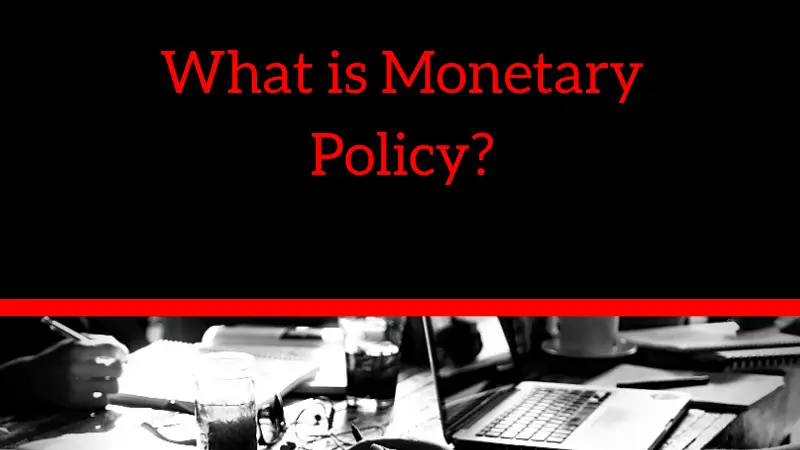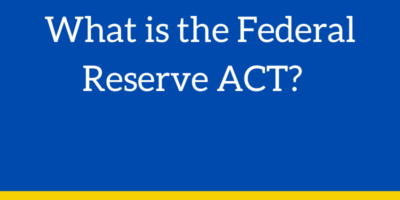What is Monetary Policy?

What is Monetary Policy? Monetary policy refers to the actions taken by a central bank or other monetary authority to manage the supply and availability of money and credit in an economy. The goal of monetary policy is typically to achieve macroeconomic objectives such as stable prices, full employment, and sustainable economic growth.
The Main Function of Monetary Policy
The main function of monetary policy is to manage the supply and availability of money and credit in an economy in order to achieve macroeconomic objectives such as stable prices, full employment, and sustainable economic growth. The central bank, which is responsible for conducting monetary policy, typically aims to balance the needs of different sectors of the economy, such as consumers, businesses, and government, while also maintaining the stability of the financial system.
In pursuing these objectives, monetary policy can have several different effects on the economy. For example, changes in interest rates can influence borrowing and lending behavior, which in turn can affect investment, consumption, and inflation. Changes in reserve requirements can affect the ability of banks to lend money, while open market operations can affect the amount of money in circulation.
The goal of monetary policy is to promote a healthy and sustainable economy by balancing the needs of different sectors and promoting long-term economic growth and stability.
History of Monetary Policy
The history of monetary policy dates back to ancient times, when societies used various forms of money, such as coins and paper money, to facilitate trade and commerce. However, the formalization and centralization of monetary policy as a tool of economic management is a relatively modern phenomenon.
The first central banks were established in the 17th century in Europe, with the Bank of Sweden (1668) and the Bank of England (1694) among the first institutions of their kind. These central banks were created to provide stability to the financial system, lend money to governments, and regulate the supply of money and credit in the economy.
In the United States, the Federal Reserve System was established in 1913 in response to a series of banking crises. The Federal Reserve was given the authority to conduct monetary policy, including the ability to set interest rates, regulate banks, and adjust the money supply.
Over time, central banks around the world have played an increasingly important role in managing their respective economies through monetary policy. This has included responding to periods of economic downturn or inflation by adjusting interest rates, reserve requirements, and other policy tools.
Today, monetary policy is a key tool used by central banks to promote economic stability, growth, and full employment, and is considered an essential component of modern macroeconomic management.
What Are the Three Main Types of Monetary Policies?
The three main types of monetary policies are:
Expansionary Monetary Policy
This type of monetary policy is used when the central bank wants to stimulate economic growth or prevent a recession. The central bank can use several tools to increase the supply of money and credit in the economy, such as lowering interest rates, reducing reserve requirements, and buying government securities on the open market. By increasing the amount of money available, expansionary monetary policy can encourage borrowing and investment, leading to higher levels of economic activity.
Contractionary Monetary Policy
This type of monetary policy is used when the central bank wants to slow down an overheating economy or curb inflation. The central bank can use several tools to reduce the supply of money and credit in the economy, such as raising interest rates, increasing reserve requirements, and selling government securities on the open market. By reducing the amount of money available, contractionary monetary policy can discourage borrowing and investment, leading to lower levels of economic activity.
Neutral Monetary Policy
This type of monetary policy is used when the central bank wants to maintain a stable level of economic growth and keep inflation under control. Neutral monetary policy is often characterized by moderate interest rates, stable reserve requirements, and a relatively stable money supply. This type of policy is designed to balance the needs of different sectors of the economy while avoiding both inflation and recession.
How Central Banks Implement Monetary Policy?
Central Banks implement Monetary Policy by using a number of tools, such as:
- Interest rate policy: The central bank can adjust short-term interest rates to influence borrowing and lending behavior in the economy.
- Reserve requirements: The central bank can require commercial banks to hold a certain amount of reserves, which can limit the amount of money banks can lend out.
- Open market operations: The central bank can buy or sell government securities to influence the amount of money in circulation.
- Discount window lending: The central bank can lend money directly to commercial banks, which can help increase the supply of money in the economy.
What Are Examples of Some of the Tools?
One of the most common tools of Monetary Policy is Interest Rate Policy.
Central banks can adjust short-term interest rates to influence borrowing and lending behavior in the economy. For example, if the economy is slowing down and inflation is low, the central bank may lower interest rates to encourage borrowing and investment, which can stimulate economic growth. On the other hand, if inflation is rising and the economy is overheating, the central bank may raise interest rates to discourage borrowing and investment, which can help to slow down the economy and prevent inflation from spiraling out of control.
Another common tool of Monetary Policy is Open Market Operations.
This involves the central bank buying or selling government securities on the open market in order to adjust the money supply. For example, if the central bank wants to increase the money supply and stimulate economic activity, it might purchase government bonds from banks or other financial institutions. This injects new money into the system, which can encourage lending and spending. Conversely, if the central bank wants to decrease the money supply and reduce inflation, it might sell government bonds, which withdraws money from circulation and makes it more expensive to borrow.
These are just a few of many examples of tools central banks use to implement Monetary policy. By using these tools, central banks can influence the level of economic activity in the short run, and thereby promote long-term economic growth and stability.



